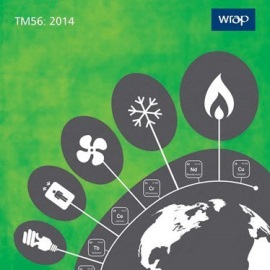
by Brianna Crandall — January 7, 2015—New guidance on the principles, importance and opportunities of the resource efficiency of building services was launched last month at an event supported by global professional technical and management support services provider AECOM and hosted by the National Union of Students (NUS). The guidance is the outcome of a collaboration between U.K.-based nonprofits CIBSE (Chartered Institution of Building Services Engineers) and WRAP, the resource efficiency experts.
TM56 Resource Efficiency of Building Services 2014 explores the impacts of building services in terms of manufacturing, construction, maintenance and disposing of the equipment at end of life. It describes the principles and importance of resource efficiency and sets out the opportunities for improvement relating to heating, cooling, ventilation, lighting, and lifts and escalators.
This publication reflects the growing pressure on resources and the desire to shape resource-efficient and more circular economies. The potential business opportunities from construction are huge, notes CIBSE. New regulatory requirements and the increasing demand for lower impact products are forecast to grow the global sustainable building industry at an annual rate of 22.8% between now and 2017.
Sarah Clayton, head of Products and Services at WRAP, commented, “What we build, how we build it and the products we use will come under enormous pressure to be energy efficient. However, it is important to focus on more than just energy efficiency; some products use more energy in the extraction of raw material and manufacturing process than they potentially save throughout their operation.”
David Cheshire of AECOM, lead author of TM56, added, “Focusing on energy efficiency alone can mean turning a blind eye to other environmental impacts, including mining in areas of water stress, extracting and processing scarce raw materials, and the release of toxic chemicals at the end of a product’s life. The aim of TM56 is to get a better sense of perspective by considering options with both eyes open.”
Copper, for instance, is used widely in building services for pipework and electrical wiring, but only 40% of new copper is from recycled material, and it is estimated that 26% of the extractable copper from the earth’s crust has been lost as waste, points out CIBSE. For more information and further examples, see the “Doing More with Less” supplement in the CIBSE Journal.
All of CIBSE’s published guidance, including TM56, is available for free as a benefit for members (or for purchase by non-members) by visiting the CIBSE Knowledge Portal.





